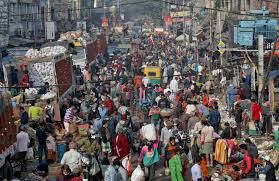China's Population
China's population was not shrinking but rather
experiencing a slowdown in population growth and a demographic shift. However,
if there have been significant changes since then, I may not be aware of them.
Nevertheless, I can provide information on the factors that were contributing
to China's changing population dynamics up to that point.
Several factors have influenced China's population trends:
- One-Child
Policy: China implemented a strict one-child policy in 1979 to
control its rapidly growing population. Under this policy, most couples were
restricted to having only one child. While the policy was relaxed in 2016,
allowing couples to have two children, it had already had a significant impact
on the population structure.
- Ageing
Population: The one-child policy and improved healthcare
have led to an increase in life expectancy and a decline in fertility rates. As
a result, China's population has been rapidly ageing, with a larger proportion
of elderly citizens compared to younger ones. An ageing population can lead to
a decline in the overall population growth rate.
- Urbanization
and Changing Lifestyles: Economic development and urbanization
have led to significant changes in people's lifestyles and preferences. Many
young people are now prioritizing education, careers, and urban living over
starting families early. Factors like high living costs, career demands, and
limited housing availability in cities have contributed to lower fertility
rates.
- Gender
Imbalance: The one-child policy, combined with a cultural
preference for male children, resulted in a significant gender imbalance. Many
families opted for sex-selective abortions or abandoned female infants, leading
to a disproportionate number of males in the population. This imbalance could
affect future population growth and marriage rates.
It's important to note that China is a vast country with
regional variations, and population trends may differ across different
provinces and rural/urban areas. Additionally, as policies and societal
attitudes can change over time, the current situation might be different from
what was observed in 2023.
It mean for A Lot Of food demand?
The changes in China's population dynamics can indeed
have implications for food demand. While the overall population growth rate may
be slowing, China still has a massive population, and its demand for food
remains significant:
- Urbanization and rising incomes have led to changes in dietary patterns and an increased demand for a diverse range of foods. As people move to cities and experience higher living standards, their diets often shift towards more varied and protein-rich foods, including meat, dairy products, and processed foods. This change in dietary preferences can put pressure on the food production system to meet the increased demand for these products.
- Additionally, as China's population continues to age, there might be specific dietary requirements and preferences among elderly individuals that need to be addressed. This could include considerations for nutritionally balanced meals, specific dietary restrictions, or the development of specialized food products targeting this demographic.
- To meet the demand for food, China has been focusing on agricultural modernization, technological advancements, and increasing productivity. The government has implemented various policies and initiatives to enhance agricultural practices, promote sustainable farming, improve food security, and invest in research and development.
It's worth noting that fluctuations in population size and demographic shifts can have complex and interconnected effects on food demand, agricultural practices, and the overall food supply chain. Changes in population dynamics are just one aspect to consider, and other factors such as economic development, trade policies, and environmental sustainability also play significant roles in shaping food demand and supply.


0 Comments
Post a Comment